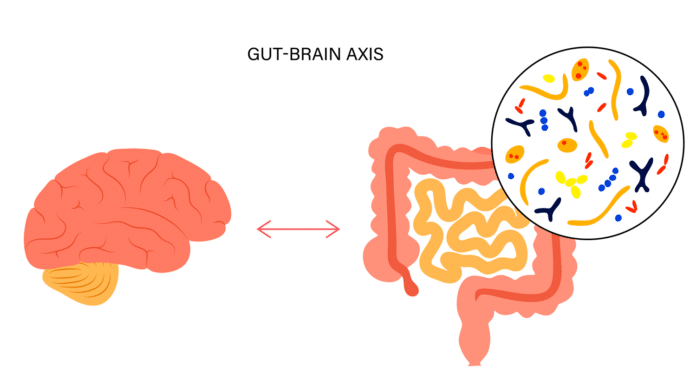The communication between the gut and the brain is a fascinating and complex process known as the gut-brain axis. This bi-directional connection involves the constant exchange of information between the central nervous system and the gastrointestinal system.
It has long been recognized that the gut influences our emotions and mental state, but recent research has shed light on the intricate mechanisms underlying this relationship. Understanding how the gut signals to the brain is of significant importance, as it impacts various physiological and psychological processes, ultimately affecting our overall health and well-being.
The gut-brain connection is essential for digestive health. It involves two-way communication between the digestive system and the brain. The colon plays a key role in this process by extracting nutrients from food and removing waste. When this connection breaks down, it can lead to various gastrointestinal issues. Researchers at Harvard Medical School of Harvard University have identified five different types of sensory neurons in the colon that send signals to the brain, a groundbreaking discovery.
In a recent study on mice published in Cell on Aug 3, researchers discovered that certain neurons are specialized for sensing gentle forces in the colon, like substances moving through it, while others detect more intense forces, such as pain. If these findings hold true for humans, they could lead to better treatments for conditions that occur when the colon-brain sensing system malfunctions.
Lead author Rachel Wolfson, a research fellow in neurobiology at HMS and a gastroenterology fellow at Massachusetts General Hospital said, “Patients often complain about sensation and pain in the gastrointestinal system, yet we don’t know a lot about the sensory neurons that innervate the gut and allow us to respond to different stimuli.”
David Ginty and his lab have extensively studied how sensory neurons in the skin communicate with the brain for our sense of touch. However, little research has been done on neurons in other body parts, like the gastrointestinal system. To address this, Ginty and neurobiologist Wolfson teamed up to study neurons in the colon. They found that five subtypes of sensory neurons present in the skin are also found in the colon, but they have distinct shapes and different forms from each other.
This study suggests that these colon neurons likely serve various functions, which could have important implications for understanding gastrointestinal health and developing better therapies.
In the short term, the researchers aim to understand why colon neurons differ in appearance from skin neurons and how these differences affect their behavior and function. This discovery opens up new avenues for investigating how neurons convert mechanical forces into electrical signals in the nervous system.
In the long term, they plan to study neurons in other parts of the gastrointestinal tract and explore how colon neurons respond to various stimuli, such as toxins or reduced blood flow, which can cause abdominal pain. While the findings need validation in humans, this research could lead to improved therapies for gastrointestinal conditions.
Targeting specific types of neurons could help treat motility-related issues like constipation and diarrhea, while addressing high-force neurons might alleviate colon-related pain. Understanding the neuron subtype sensitive to inflammation could be crucial for managing pain in patients with inflammatory bowel disease, potentially offering a new therapeutic approach alongside anti-inflammatory medications.
Journal Reference:
- Brendan P. Lehnert, Celine Santiago et al., Mechanoreceptor synapses in the brainstem shape the central representation of touch. Cell. DOI: 10.1016/j.cell.2023.07.007.
